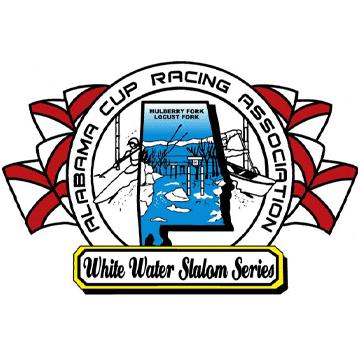
Whitewater Racing FAQ
**These are the answers to some of the questions we get every year. If you can’t find what you are looking for, please either email us or message us on Facebook.
What class do I sign up for? Championship, Cruising or Novice?
Classes are a skill designation and identify what type of boat you can use to compete.
Championship – Glass and plastic boats are allowed. This is the advanced class; thus, the racers will be faster and more skilled. This doesn’t mean that you can’t race in this class if you are a beginner. This class competes on Saturday.
Cruising – No glass boats, plastic only. There will still be good racers in this class, but they can’t race their glass boats. This class races on Sunday.
Novice – This is for the first-time racer. This is a class where you will see people racing creek boats, play boats and everything in between. You can race novice for your first three years or until you place in a novice race. If you are a novice, you can also race in cruising. This class races on Sunday.
What constitutes Masters or Juniors?
Masters are age 40 or older, and juniors are age 18 or younger, open is any age. If you race in masters or juniors, you can also race in the open class (any age).
What are the boat types?
Very simple descriptions:
- K1 – 1-person kayak
- K2 – 2-person kayak
- OC1 – 1-person canoe
- OC2 – 2 people in a canoe
- C1 – 1 person on his/her knees using a canoe paddle in a decked boat
Can I race in more than one class?
You may race in up to 3 slalom classes per day. For example, you could race K1, OC1 and OC2. You get two race runs per class.
What does it mean for a class to “make”?
At least 3 racers must register for a class in order for it to “make” and for medals to be awarded for the class. If a class does not make you can race for time, possibly be combine into another class or get a refund of your entry fee.
What is the Alabama Cup?
If a class makes for both the Locust and Mulberry races, the racer with the best combined score wins the cup. The AL Cups are awarded at the banquet on Saturday night of the Locust Fork Races for Championship classes and Sunday for Cruising and Novice.
What is Downriver race?
Downriver is a just like it sounds. We take a crew of racers up river and start them by class. You race down the river for a few miles, and the finish line is the same as the slalom finish line. We race downriver on Saturday afternoon, and we do it as a group. We load all the boats up on a trailer, pile into a few vehicles and drive to the start. It takes on average about 30 minutes to paddle the stretch. Some faster, some slower. You race against those who register in your class for time. You do not run gates on the course in the downriver race. Just to the finish line.
What is Boater-Cross?
This is a dead heat start from the top of the race course. Classes do not apply. Any boat goes. There are 3 gates designated for this race, and everyone battles down the course (not all gates, but usually 3 designated gates). You start facing upstream in the top eddy and wait for the start. Once you start, the first one to the bottom wins.
When is the racer’s meeting?
We have a racer’s meeting at 8 a.m. each day. This is where information is provided to you about the course, the site, safety concerns and other details about racing that day. It is also your chance to ask questions about the course, rules, scoring, etc. Race bibs for that day are handed out immediately following the racer meeting so everyone is strongly encouraged to attend the meeting and pick up your bibs first thing in the morning.
When does the race start and when does my class run?
Racing starts at 9 a.m. on each day. All racers need to pick up all bibs for the day right after racer meeting. We run in bib order and by class. You need to be at the start, in your boat when it is your turn to start. Otherwise, you will have to wait, be squeezed into another class out of order, and it makes it harder for everyone. So be ready and stay in order please.
Can I pass another racer?
Yes, if you over take another racer, they must let you pass. If they do not, they will be disqualified. Just make sure they know you are coming up behind them before you try to pass. If you are being passed, let the faster racer go past.
What happens if I don’t stop to help a fellow racer in a trouble?
You are disqualified and now have bad river karma. If someone is in trouble, you must stop to help them. We have to take care of each other.
What is the difference in the pole colors?
There are red and green poles. Green is a downstream gate, meaning you must pass through the gate headed down stream. Red is an upstream gate, meaning you must pass the gate, turn around and head upstream through the gate. If you pass through the gate going the wrong direction, it is considered a miss.
What is the goal?
Navigate the gates in numbered order, without touching or missing a gate. After completing the last gate, you will paddle through the finish line. Your score is the total of your elapsed time plus your penalties. Low score in each class wins the class.
What happens if I touch or miss a gate?
If you touch a gate, it will add 2 seconds to your time for decked boats and 10 seconds to your time for open canoes. If you miss a gate, it will cost you 50 seconds, so we suggest not missing any.
How many runs do I get per class?
You get 2 runs down the course for each class you are competing in, e.g., if you are in the K1 men’s class, you run the course, carry back up, and run it again. The better time of the two runs is your official score.
How are racers scored?
Your score is the total of your elapsed time plus your penalties. Low score in each class wins the class. We give out a 1st, 2nd and 3rd place medal for each class.
